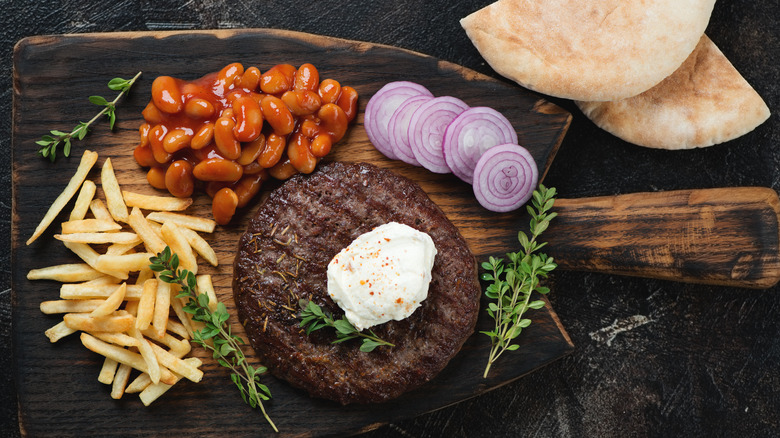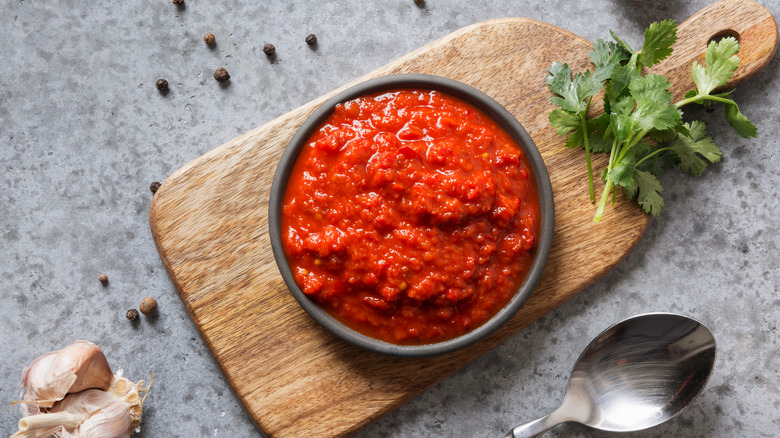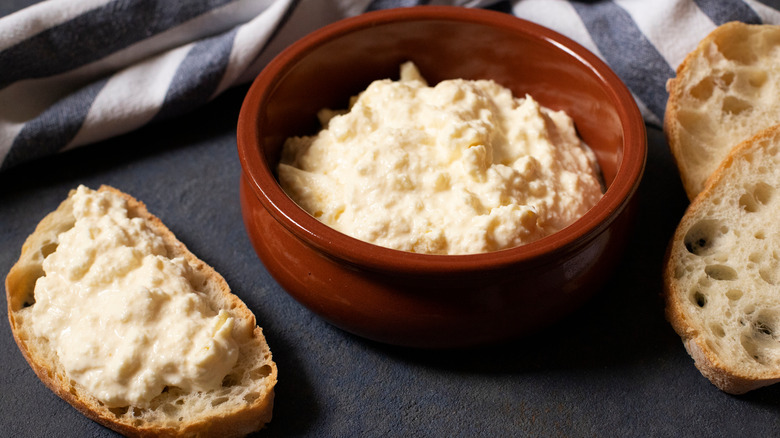The 2 Traditional Condiments That Are Often Served With Serbian Meats
Serbia is a Balkan country that bridges Central and Eastern Europe and has a culinary culture thus from Balkan, Eastern European, and Mediterranean cuisines. A diverse variety of Serbian dishes encompasses Greek dishes like Moussaka, stews similar to Hungarian goulash, and proprietary variations on popular Balkan meat dishes.
Meat is a central part of the Serbian diet. A ground meat patty known as pljeskavica is one of Serbia's traditional dishes. Resembling hamburger meat, pljeskavica is a grilled patty, consisting of ground lamb, pork, and beef blended with garlic, onions, and seasonings. Serbians serve pljeskavica with side dishes or in a pita-like flatbread, elaborated with a wealth of delicious relishes, sauces, and raw and pickled vegetables.
Whether you're eating homemade pljeskavica off a traditional mixed grill or in a fast food restaurant, you'll always find it accompanied by two traditional condiments: ajvar and kajmak. Kajmak and ajvar are at opposite ends of the flavor spectrum; One is a rich, creamy, and cheesy dairy product and the other is a spicy roasted vegetable relish. You can enjoy the two separately or together atop a patty of pljeskavica.
Ajvar
Also known as vegetable caviar, ajvar is a spicy, tangy, and smoky roasted red pepper spread. Historically, Serbians have made and jarred ajvar to store for the winter months but you can now buy pre-packaged ajvar in Serbia year-round.
Making ajvar is a straightforward yet time-consuming process wherein red bell peppers are roasted either in an oven or over an open flame until their skin blisters. After removing the blistered skins and blending the peppers' soft, roasted flesh, they reduce to a thick mash on the stove with sunflower oil, salt and pepper, vinegar, and garlic. Depending on your preference, ajvar's texture ranges from a chunky relish to a uniformly mashed spread. Eggplant is a common additive in many recipes and Serbian brands of ajvar.
It's also a versatile dish, enjoyed as a breakfast spread, side dish, appetizer, or spread for barbecued meats. Chefs have free reign to make ajvar spicier or sweeter by adding chili flakes, sugar, or roasted tomatoes.
Kajmak
Kajmak is a thick, ultra-rich spread made from creamed cow's or sheep's milk. Serbians traditionally make kajmak at home by collecting residual cream that collects atop milk that simmers for hours over low heat. The cream is thick and lumpy, with a sweet and savory flavor profile that intensifies with age.
Serbians categorize kajmak as either young or old. Young kajmak is the freshest variety. It has a sweeter and milder flavor and a uniformly creamy, soft consistency. Serbians use fresh kajmak interchangeably with butter to spread over fresh bread or as a rich buttery sauce that melts over pljeskavica.
Old kajmak refers to kajmak that has matured for days or weeks. This maturation process clumps and hardens the cream and changes its flavor. Old kajmak is much more complex and pungent than young kajmak, featuring a cheesy umami flavor with a subtly sweet finish. Old kajmak's richness and depth of flavor would stand up to and provide a nice compliment for a heavy red meat dish like pljeskavica.


